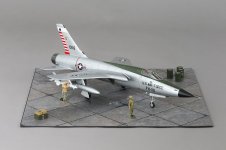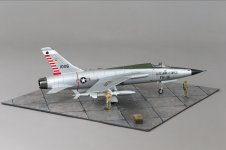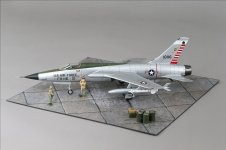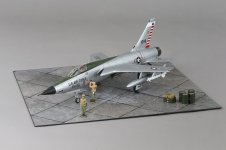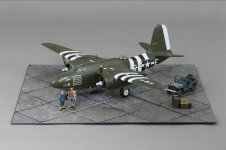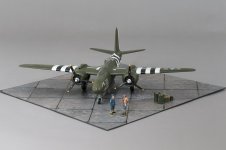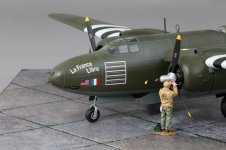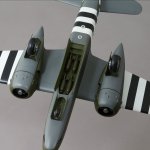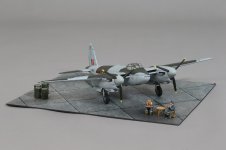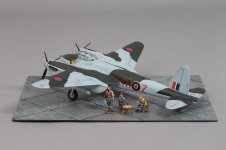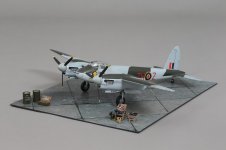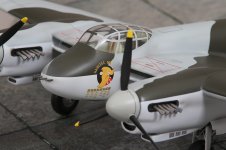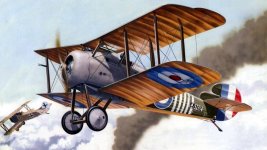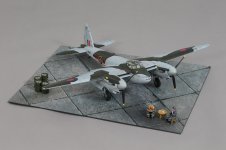Gunn Miniatures
Command Sergeant Major
- Joined
- Jun 18, 2009
- Messages
- 2,724
WOW338 KI-84 Hayate 'Kamikaze Variant'
The Nakajima Ki-84 Hayate, known as “Frank” in Allied jargon, was one of the best IJAAF (Imperial Japanese Army Air Force) fighters during the final year of the Pacific war. Featuring an enclosed cockpit and retractable landing gear, this all-metal cantilever low-wing monoplane with an elegant body, was the successor to the previous Nakajima fighters, the Ki-43 Hayabusa and Ki-44 Shoki.
The Ki-84 proved its value fighting in China and the Philippines, although the highest number of these machines were lost there too. When in the hands of an experienced pilot, it was a good match for the best of Allied fighter aircraft. After the war a small number of Ki-84s served with the Chinese air forces, taking part in the civil war of 1945-1949.
The Nakajima Ki-84 was the fastest single-engine fighter used by the Imperial Japanese Army Air Force in World War II. It marked the evolution of the series of fighters produced by Nakajima starting with the Ki-27 Nate, and continuing with the Ki-43 Oscar and Ki-44 Tojo. It outperformed the F6F Hellcat, P-51 Mustang and P-47 Thunderbolt. It was a powerful high-altitude fighter that combined the nimbleness of the Ki-43 with the heavy firepower of the Ki-44. It was used to intercept B-29 Superfortresse’s and was armed with two 12.7 mm machine guns above the cowling and two 20 mm cannons located in the wings. It made its inaugural flight in April 1943 and from the drawing board to the production line was only ten months. Total production was 3,382 aircraft
The Ki-84 was designed to replace the Ki-43 Oscar which was just entering service at the time. The new requirement called for an aircraft that would match the performance of any Allied fighter. This called for greater power and maneuverability than the Ki-43 and unlike previous aircraft, such as the famous Mitsubishi Zero, it would have armor protection for the pilot and would be equipped with self-sealing tanks.
In late August of 1944, the Ki84 first entered combat over China with the 22nd Air Regiment (this Regiment had been involved in the testing/training period of the new fighter). Initial results were excellent, catching the American Army Air Force pilots completely off guard.
We have only 5 of these 1/30 scale models priced at $550 plus shipping.
This is the Ki-84, flown by Gunso Takano, 57th Shimbu-tai.
Shinbu-Tai translates as “Special Attack” units or better known in the West as Kamikaze units. On 25 May 1945, 10 x Ki 84's piloted by 57th Shinbu- tai, including Takano attacked allied ships west of Okinawa Island, none returned.
All figures shown are for scale comparison purposes only.
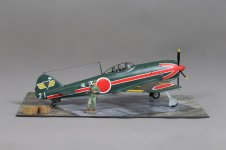
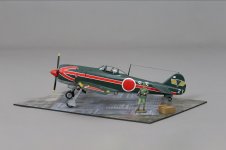
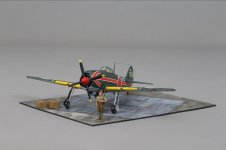
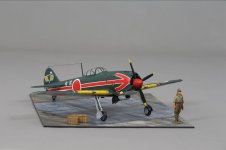
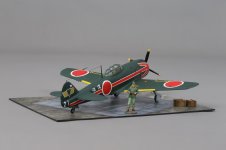
That's all for this month, we sincerely hope you enjoy the pictures and would love to hear from you if any of these magnificent models appeal to you. They are all now on our website www.tomgunn.co.uk and can be paid for upfront or over an extended monthly period. All Gunn Club members qualify for a 10% discount on the website listed price, joining is free so well worth registering.
We hope everyone is staying safe and taking care in these troubled times, which are hopefully coming to an end soon for everyone.
Best wishes The Gunn Team
The Nakajima Ki-84 Hayate, known as “Frank” in Allied jargon, was one of the best IJAAF (Imperial Japanese Army Air Force) fighters during the final year of the Pacific war. Featuring an enclosed cockpit and retractable landing gear, this all-metal cantilever low-wing monoplane with an elegant body, was the successor to the previous Nakajima fighters, the Ki-43 Hayabusa and Ki-44 Shoki.
The Ki-84 proved its value fighting in China and the Philippines, although the highest number of these machines were lost there too. When in the hands of an experienced pilot, it was a good match for the best of Allied fighter aircraft. After the war a small number of Ki-84s served with the Chinese air forces, taking part in the civil war of 1945-1949.
The Nakajima Ki-84 was the fastest single-engine fighter used by the Imperial Japanese Army Air Force in World War II. It marked the evolution of the series of fighters produced by Nakajima starting with the Ki-27 Nate, and continuing with the Ki-43 Oscar and Ki-44 Tojo. It outperformed the F6F Hellcat, P-51 Mustang and P-47 Thunderbolt. It was a powerful high-altitude fighter that combined the nimbleness of the Ki-43 with the heavy firepower of the Ki-44. It was used to intercept B-29 Superfortresse’s and was armed with two 12.7 mm machine guns above the cowling and two 20 mm cannons located in the wings. It made its inaugural flight in April 1943 and from the drawing board to the production line was only ten months. Total production was 3,382 aircraft
The Ki-84 was designed to replace the Ki-43 Oscar which was just entering service at the time. The new requirement called for an aircraft that would match the performance of any Allied fighter. This called for greater power and maneuverability than the Ki-43 and unlike previous aircraft, such as the famous Mitsubishi Zero, it would have armor protection for the pilot and would be equipped with self-sealing tanks.
In late August of 1944, the Ki84 first entered combat over China with the 22nd Air Regiment (this Regiment had been involved in the testing/training period of the new fighter). Initial results were excellent, catching the American Army Air Force pilots completely off guard.
We have only 5 of these 1/30 scale models priced at $550 plus shipping.
This is the Ki-84, flown by Gunso Takano, 57th Shimbu-tai.
Shinbu-Tai translates as “Special Attack” units or better known in the West as Kamikaze units. On 25 May 1945, 10 x Ki 84's piloted by 57th Shinbu- tai, including Takano attacked allied ships west of Okinawa Island, none returned.
All figures shown are for scale comparison purposes only.





That's all for this month, we sincerely hope you enjoy the pictures and would love to hear from you if any of these magnificent models appeal to you. They are all now on our website www.tomgunn.co.uk and can be paid for upfront or over an extended monthly period. All Gunn Club members qualify for a 10% discount on the website listed price, joining is free so well worth registering.
We hope everyone is staying safe and taking care in these troubled times, which are hopefully coming to an end soon for everyone.
Best wishes The Gunn Team


